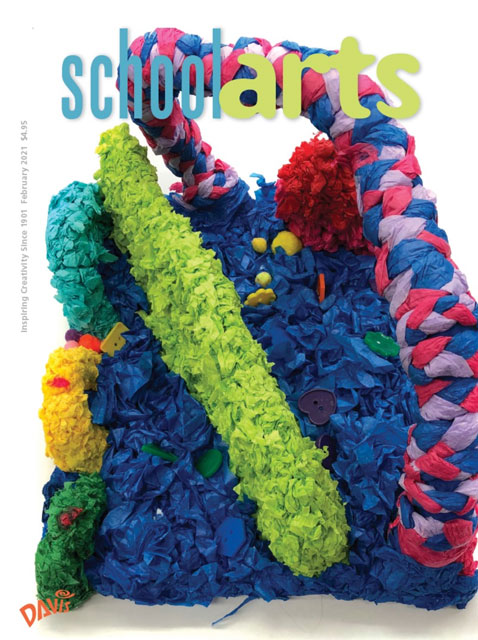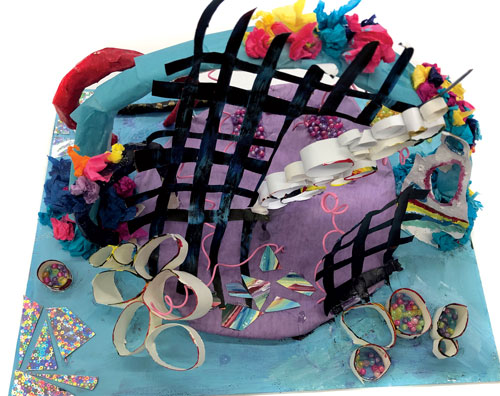 |
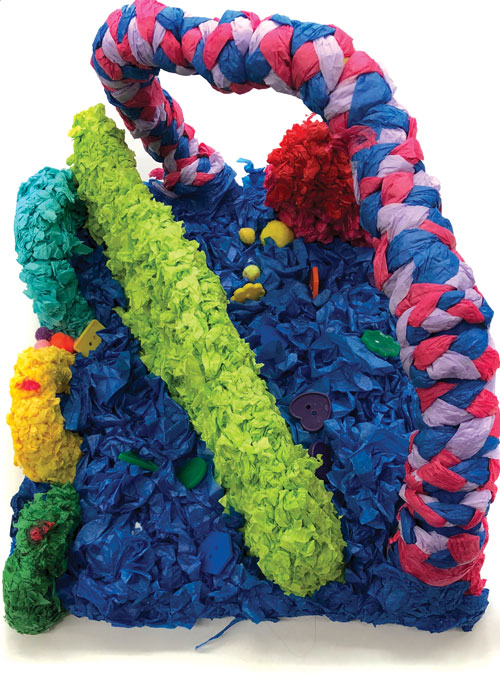 |
| Top: Milana A., grade eight. Bottom: Gulizoda K., grade eight. |
I was searching for a way to motivate them while also helping them feel successful with their art, and that’s when I stumbled across the work of Crystal Wagner.
An Inspiring Artist
Crystal Wagner’s sculptures are bright, bold, and unconventional. Using materials that are readily available, such as chicken wire, plastic tablecloths, or paper, she creates organic forms that travel through spaces, sometimes contained within a building or a box and sometimes growing out from within a building or box. Wagner’s creativity inspired me to challenge and motivate students to create their own unique sculptures.
First, we watched a video of Wagner creating a site-specific sculpture at the Viacom offices in New York City. Students were mesmerized as they watched the sculpture grow and become part of the space. They also saw people volunteering as a community to help build the very structure they would eventually walk past or beneath every day on their way to work.
Examining Nonobjective Art
We looked at other examples of Wagner’s work. Students discussed the forms, colors, shapes, textures, lines, balance, proportion, and the way the works moved through space. Through discussion, students became aware that artwork does not have to be representational to be interesting or successful. We defined nonobjective art as work that does not represent or depict a person, place, or thing in the natural world. Its content relies on its colors, shapes, forms, textures, lines, scale and size.
Experimenting with Media
Students began by experimenting with and manipulating paper to create structures that formed interesting shapes that were balanced and stable. They used their paper experiments to plan out their sculptures and created sketches of what they imagined their finished sculptures would look like.
Students used a cardboard or foamcore base for their sculptures. Their task was to create a nonobjective sculpture that took inspiration from Wagner’s artwork. They used newspaper, tissue paper, telephone wire, duct tape, paint, and found materials.
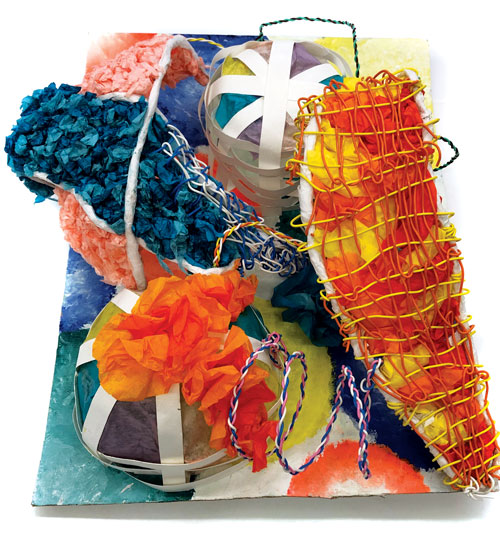 |
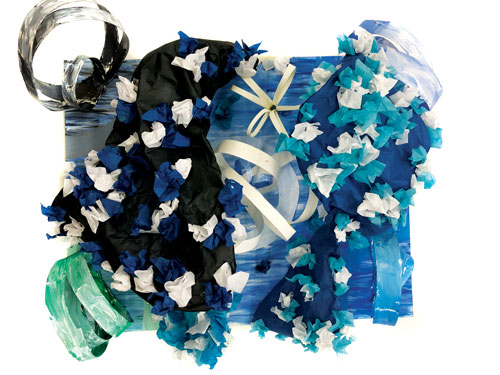 |
| Top: Alexa G., grade eight. Bottom: Ivy L., grade eight. |
Positive Risk-Taking
Students were engaged and inspired through every step of this project. I watched as they edited their work when things weren’t fitting or balancing. They generously offered and accepted feedback from their peers about materials and techniques that worked for them.
Students showed care and pride in their own artwork and offered praise of the accomplishments of their class mates. This lesson provided students with a platform where it felt safe to make creative choices and gave them the opportunity to take risks.
Lisa Banker is an art teacher at David A. Boody, I.S. 228 in Brooklyn, New York. slbanker@comcast.net
NATIONAL STANDARDS
Creating: Conceiving and developing new artistic ideas and work.
RESOURCE
Crystal Wagner: afanyc.com/crystalwagner
View this article in the digital edition.
